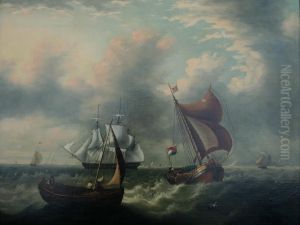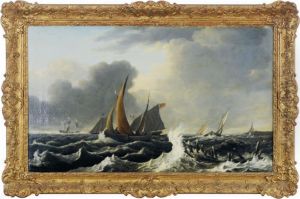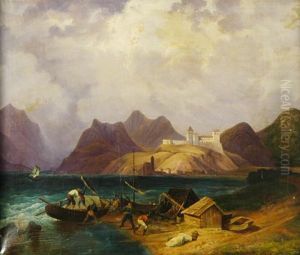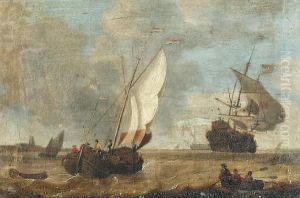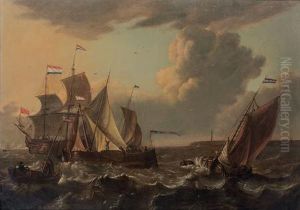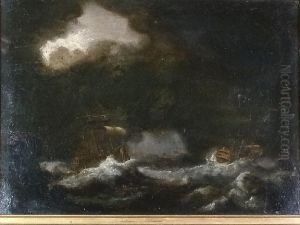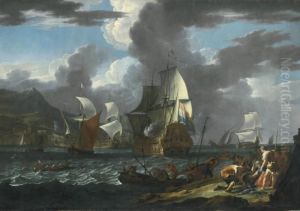Ludolf Bakhuyzen Paintings
Ludolf Bakhuyzen was a prominent Dutch painter, part of the 19th-century European art movement. Born on August 26, 1837, in The Hague, Netherlands, he was descended from a family with a strong artistic tradition. His grandfather, Hendrik van de Sande Bakhuyzen, was a well-known landscape artist, and his father, Julius Jacobus van de Sande Bakhuyzen, was also a painter. This familial environment provided Ludolf with a rich artistic education from an early age.
Bakhuyzen initially trained under his father and later attended the Royal Academy of Art in The Hague, where he honed his skills in landscape painting. He was particularly influenced by the 17th-century Dutch landscape tradition, which is evident in his detailed and atmospheric renderings of the Dutch countryside.
Throughout his career, Bakhuyzen developed a reputation for his pastoral scenes, often featuring cattle and serene natural settings. His technique was characterized by a precise, realistic approach and a delicate handling of light and shadow, which added a sense of tranquility to his work.
Bakhuyzen's work was well-received in his lifetime, and he exhibited regularly at various art exhibitions, including the prestigious Paris Salon, where he gained international recognition. He was also a member of the Pulchri Studio, an art society in The Hague that played a significant role in the development of Dutch art in the 19th century.
Despite the rise of modernist movements in the late 19th and early 20th centuries, Bakhuyzen remained committed to his traditional style, which continued to be popular with collectors and the public. He passed away on December 28, 1923, in The Hague, leaving behind a legacy of serene and beautifully crafted landscapes that continue to be appreciated for their technical mastery and evocative portrayal of the Dutch countryside.
